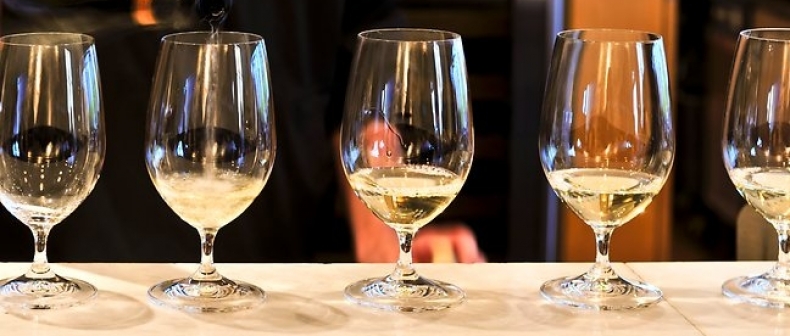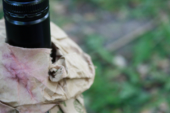
Image: theaustralian.au
Sauvignon Blanc: it’s one of those immediately recognizable grapes that sommeliers love to find on blind tasting exams. It’s got personality, and despite appearing in a myriad of outfits, from beach shorts and flip flops, to black tie and high-tops, a composite image of the various styles of sauvignon looks like a family reunion photo — there’s an unmistakable resemblance underlying the superficial differences. But, given the impressive array of variations-on-a-theme, from the archetypical lean, crisp, bone dry and chalky-mineral examples from the Loire Valley (mainly Sancerre and Pouilly-Fumé), to New Zealand’s sassy herbaceousness, Friuli and southern Austria’s mineral-meets-herbal-meets-passion fruit, South Africa’s violent green pepper and wet ash, coastal Chile’s tight guava and grapefruit or California’s gentle tropical fruit and oak-tinged styles, you could be forgiven for wanting to spend a lifetime exploring all the world has the offer. To avoid missing out on virtual visits to other exotic corners of the wine world and discovering other potentially memorable flavours, below are two alternative grapes that will help kick the sauvignon habit.
If you like sauvignon blanc, you’ll probably also like:
- Semillon
- Verdejo
Semillon is the famous white grape of Bordeaux that nobody knows. That’s because it’s often blended (with sauvignon blanc) and comes under the name of an appellation such as Graves rather than its own. It’s the main ingredient in sublimely sweet Sauternes and other wines of the sweet kind, but performs admirably well in dry versions. Like sauvignon blanc, it has a distinctly grassy-herbal flavour, especially when grown in cooler climates. A little more sun coaxes out some lemon oil, grapefruit and green fig notes, while time in the bottle delivers a characteristic honey and petrol-like profile.
Outside of Bordeaux, it was once the most widely planted grape in South Africa and Chile. But today its new world home is Australia (it has been there since the early 1800s). The most exceptional varietal semillons (down under it’s pronounced se-mi-LAWN, not the nambie-pambie French pronunciation, seh-mee-YON) are from the Hunter Valley north of Sydney. The grape is harvested early out of necessity (before the monsoon like rains arrive in the fall), but the results have turned out to be shockingly good. It was discovered that after several years in bottle, the searingly tart, green tinged wine evolved into the most remarkably complex, honeyed, mineral beverage. Great Hunter Valley Semillon is one of the world’s most unique wines, especially with a bit of age.
Verdejo: As the story goes, in was sometime in the mid-1970s when the Marqués de Riscal, a reputable winegrower of long standing in Rioja, Spain, finally got fed-up with the mediocre results of his white wine program. Rioja, it seems, and its main white variety viura (aka maccabeo), just wasn’t doing it for the Marquis. He engaged legendary Bordeaux wine consultant Emile Peynaud to help him find a suitable grape and place in Spain in which to make fine white wine. They traveled high and low, searching throughout the country, and had all but given up hope. Traveling dejectedly on the road back to Rioja along the Duero River, monsieur Peynaud asked to stop the car one last time; he had spotted some promising vineyards. He stepped out, examined the surroundings, walked up to a row of vines and plucked a few ripe grapes for a taste. From the car window, the Marquis had a clear view to see the reaction on Peynaud’s face: it was shock, followed by confusion, then elation. The quest was at an end.
The grape, of course, was verdejo, a lost variety that had been used to make ersatz sherry since the days when the Moors had driven the Spanish Catholic Kings out of Jerez de la Frontera. The region was Rueda, a backwater along the Duero. But the grape, in its fresh form, held the promise of great, zesty, herbal-fruity wine that would become one of Spain’s best within a decade. The finest Ruedas are like sauvignon-meets-viognier: the aromatics of ripe sauvignon — guava, passion fruit and tropical fruit salad, with the fatter, more viscous texture of viognier. Most are unoaked, but you’ll come across the occasional barrel-fermented style; I have not yet found verdejo from outside of Spain, but its time will come.
_____
John Szabo is a master sommelier and wine writer for Toronto Standard. Follow his tweets here: @johnszabo.
Check out Szabo’s weekend picks for specific recommendations, and more at www.johnswines.com
For more, follow us on Twitter @TorontoStandard and subscribe to our newsletter.














